GREEN ROOM

VOL 4. OCTOBER 2025

Leticia Schenkel
Editor-In-Chief
Howdy y’all! My name is Leticia Schenkel. I am a philosophy major from Grapevine, Texas, but most importantly, I am the loudest and the proudest member of the Texas A&M Class of 2026!


VOL 4. OCTOBER 2025

Leticia Schenkel
Editor-In-Chief
Howdy y’all! My name is Leticia Schenkel. I am a philosophy major from Grapevine, Texas, but most importantly, I am the loudest and the proudest member of the Texas A&M Class of 2026!

This issue was brought to you by Leticia Schenkel ‘26 Editor-In-Chief
M. Campbell, A. Quackenbush, K. Kattari, A. Spiers, J. Honeycutt, V. Reiser Faculty Advisory Committee
I hope you are all having a spook-tacular October! We are very excited to share our spookiest issue yet! I hope you enjoy our stories about the little treats and tricks we have found hiding among the walls of the College of PVFA. Bela Gomez
We have had an incredibly busy semester with a bunch of fun events happening across all our disciplines There is never a quiet day around here!
If you have time, check out our other issues! Now, enough of me and let’s get to the stories.
I hope you finish the semester off strong and we look forward to hearing more from you all!
Thanks! And Gig ‘Em!Leticia Schenkel

Follow our Instagram @PVFAGREENROOM PSST
Kyle Lev Contributors
Bruno Schoech
Karen Lopez

Pg. 4: The Artist Behind The Stylus
Pg. 6: It’s Catching: The Dance That Wouldn’t Die
Pg. 8: Which Shakespearean Ghost Are You?
Pg. 10: Drenched In Green: Experiencing Performance Dork
Pg. 12: Mr. Bobinky’s World
Pg. 14: Psychobilly: Rockabilly Meets
The Living Dead
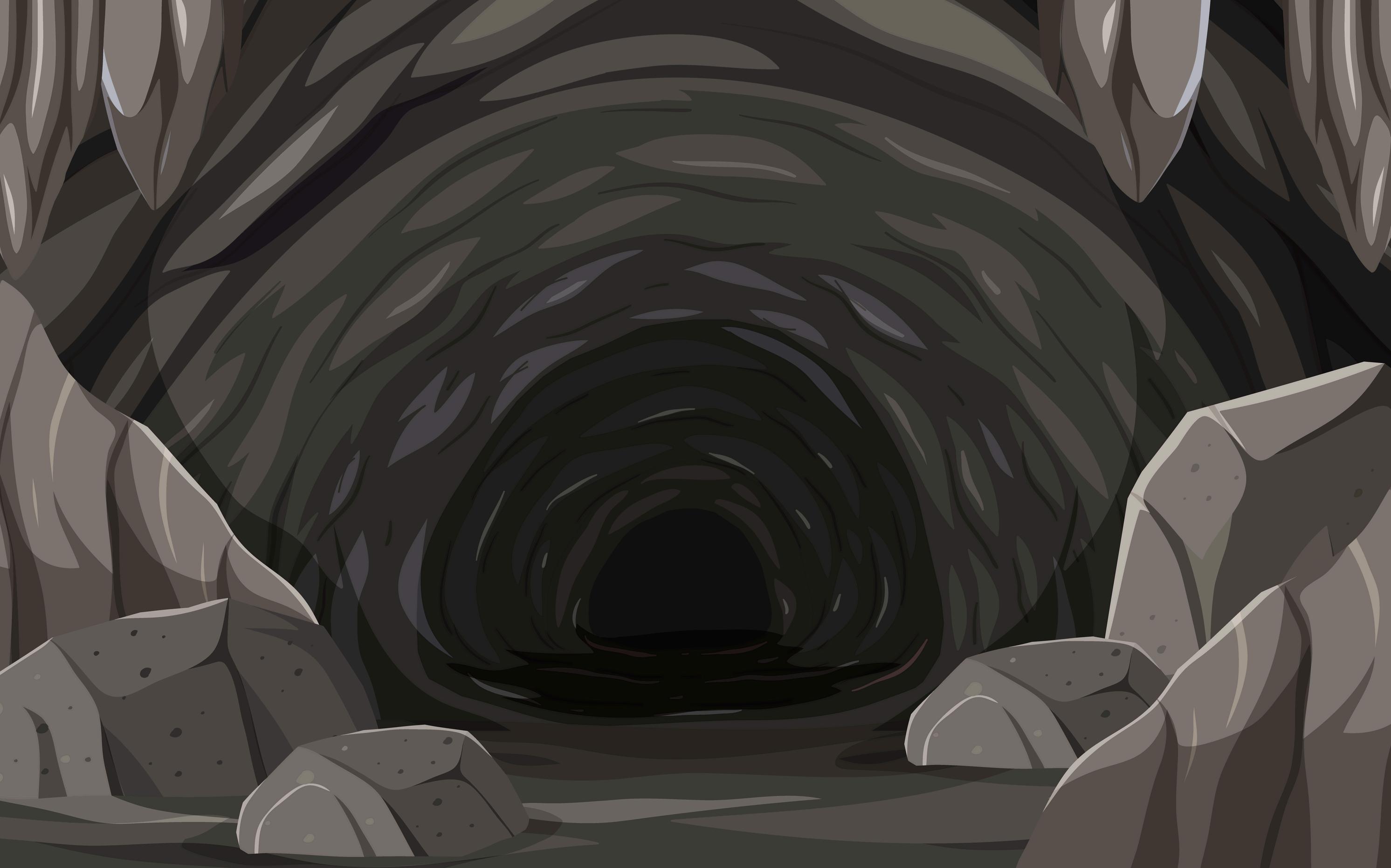
Pg. 16: Orange: A Game
About Expectation, Anxiety, and Oranges

Meet the amazing artist behind this month’s cover design
Our fang-tastic cover for this October’s issue was designed by Senior Visualization major Bela Gomez!
I was very excited for the opportunity to draw the cover! It was so much fun. I really love cute things, so as an artist, I enjoy making things that are whimsical.
When I was a little girl, like most children, my favorite thing about October and Halloween was going trick-ortreating with my friends and siblings. Getting to put on a funky costume and laugh and parade around the neighborhood past my bedtime to get candy was just so much fun.
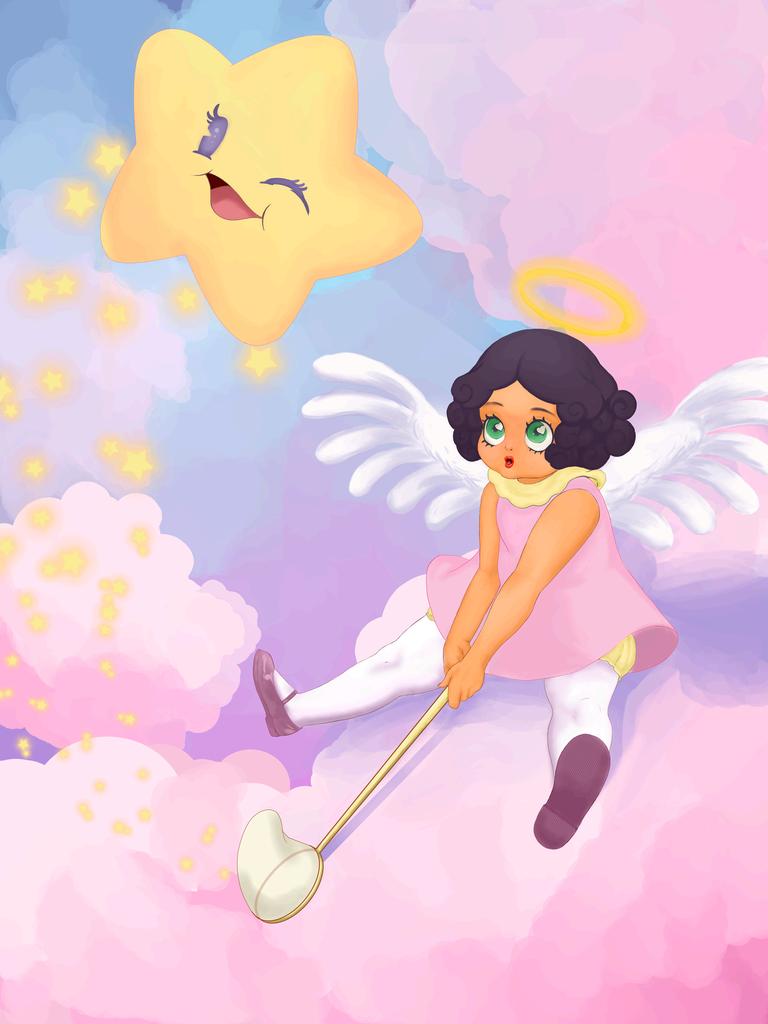
Because of that, I wanted to show something like that on the cover and add an extra fantastical element. I also really wanted it to have a detailed background, so I challenged myself to make one. I used a palette taken from old cartoons as well, so that it might evoke a feeling of nostalgia.
Check out Bela’s portfolio:
Bela Gomez is a 2D artist and animator who has a passion for character design and 2D animation. She has interned in Tokyo, Japan, where she worked on game titles such as "Clock Out @ 2." Gomez is also proficient in Clip Studio Paint, After Effects, Photoshop, Illustrator, with additional skills in Nomad Sculpt, ZBrush, and Substance 3D Painter.
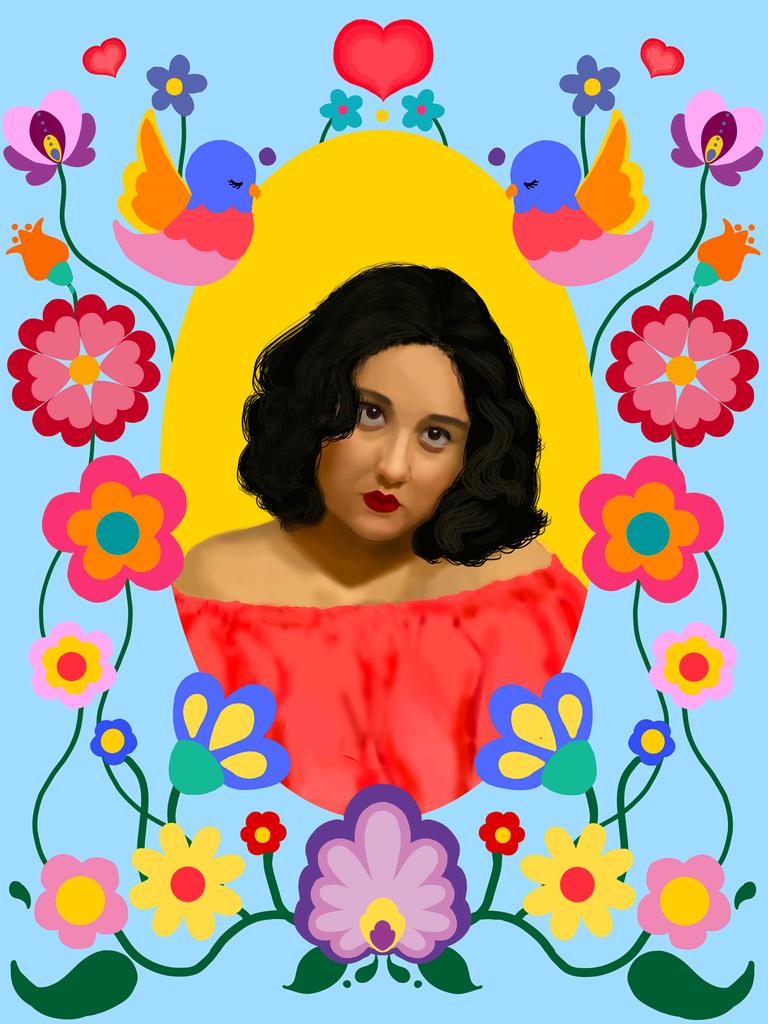

It’s Catching It’s Catching It’s Catching It’s Catching It’s Catching It’s Catching
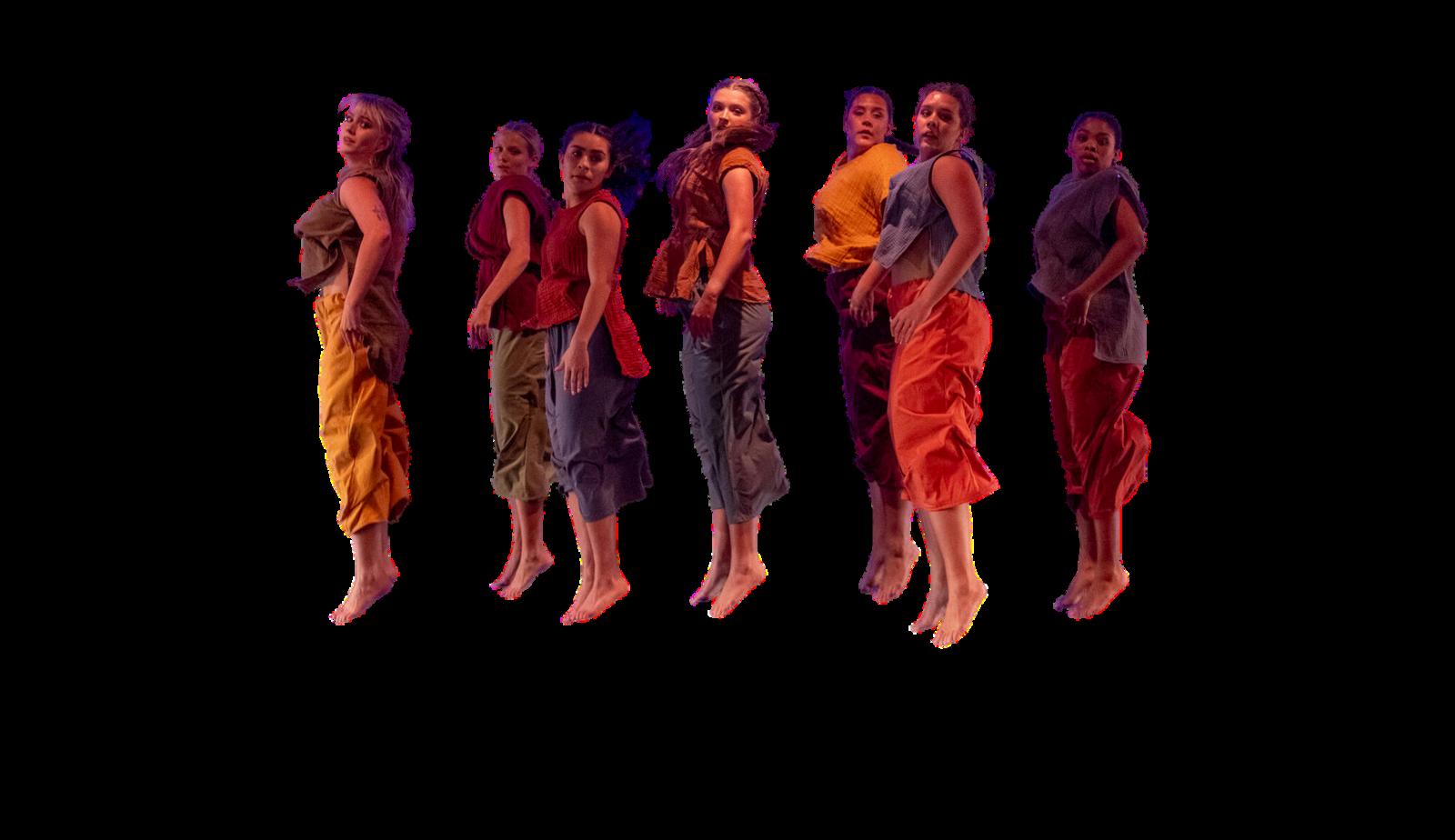


When the music takes over… and the body can’t stop.
The project It’s Catching, choreographed by PVFA faculty Abby Williams Chin, was such a fun project to be a part of. We were able to perform this dance in Perpetual Motion 2025, and it was also selected to be performed at the American College Dance Association conference in March 2025. I absolutely loved getting to perform this dance because it was a push for me as an artist to get out of my “normal comfort” style of dancing.
This piece played with lots of quirky, let-loose movements while also maintaining an inner control to make it look easy to the audience. It was such a fun, feel-good dance to do, and I already miss performing it. The whole concept of this dance was based on the Dancing Plague of 1518 an unexpected event that occurred in Strasbourg, France, where hundreds of people could not stop dancing uncontrollably for weeks, which led to exhaustion, injury, and even death I was very intrigued by this because I had no idea what this historical event was, let alone that it even existed.
I did further research to better understand what it was about so I could know the purpose behind each of my movements, as well as the emotions I should portray to the audience. I thought this was such a brilliant concept to create a dance about because there is so much meaning behind it, which helps the choreographic process and allows the audience to understand the narrative of the piece Throughout the dance, some of us would randomly stop dancing and “die” from exhaustion, while the other dancers acted confused, like they were wondering why that dancer stopped.
By Melanie Wills ‘27 | Kinesiology, Dance Performance
However, not everyone died from this plague. Some were able to stop dancing and just observe the people who had the dancing plague and couldn’t get out of it. I was able to “survive” the dancing plague and leave the stage. Even to this day, I remember how this dance ended I will remember it forever because it has been
one of my favorite endings to a piece that I have been a part of or seen from the audience The piece ended with two girls still “stuck” in the dancing plague, unable to stop dancing. One dancer yells to the other dancer: “I feel like we should stop dancing.” The other replies: “Then what? THEN WHAT?” – with the second time expressing more frustration and panic.
Why should we stop dancing when we could possibly not survive if we did stop?
I interpreted this as meaning: why should we stop dancing when we might not survive if we did? It was a very captivating ending. The first time I did this dance, I wanted to know what happened next instead of the lights going dark and the piece ending. I wanted the piece to continue so that I could find out what happened if they did decide to stop dancing.
I was very thankful to be a part of this process and to be able to interpret a historical event to an audience through such wonderful movement choreographed by Abby Williams Chin Abby created such an encouraging, safe environment for our rehearsals, and it made the creative process even better than it already was I loved getting to experience and perform this piece, and I hope anyone who was not able to experience it can find a way to watch it.
Becausesometimesbeingdramatic doesn’tstopwithdeath.
How did you die? (Theoretically)
A Betrayed by someone I trusted
B. I fought valiantly, but… bad luck.
C. Wrong place, wrong time.
D. Died of heartbreak.
E. Drank a potion to turn into a ghost to scare people
Pick your ghostly weapon:
A. Sword.
B. Emotional Damage.
C. Dagger.
D. A pen.
E. Jazz hands.
What’s your ghostly vibe?
A. Brooding and philosophical
B. Vengeful, but classy about it.
C. Confused but committed.
D. Glamorous, tragic, and full of eyeliner.
E. Full theater kid energy.
What’s your haunting style?
A. Appearing in fog and quoting soliloquies.
B. A single cold whisper in the corner
C. Rearranging props during tech week.
D. Crying beautifully in the corner.
E. Jump scares, constant jump scares.
What do you miss about being alive?
A. Having a purpose.
B. Having power.
C. Having friends.
D. Having love.
E. The drama
Mostly A’s: King Hamlet From... Hamlet...
You’re brooding, articulate, and emotionally unavailable You appear in mist, speak in riddles, and live (well, haunt) for dramatic timing
Mostly B’s: Banquo From Macbeth
You’re that ghost who shows up uninvited to dinner parties just to make things awkward Stoic Silent Absolutely judging everyone. You haunt for moral reasons and some revenge
Mostly C’s: Ceasar From Julius Ceasar
You have main character energy even in death You don’t haunt for revenge, you haunt to make a point You’re still mad about it And honestly? I get it
Mostly D’s: Desdemona’s Ghost From Othello
Technically, not a ghost character but her spirit can be felt throughout. You’re poetic, gentle, and hauntingly curious Everyone feels sad and can’t explain why. You’re the ghost of what should’ve been
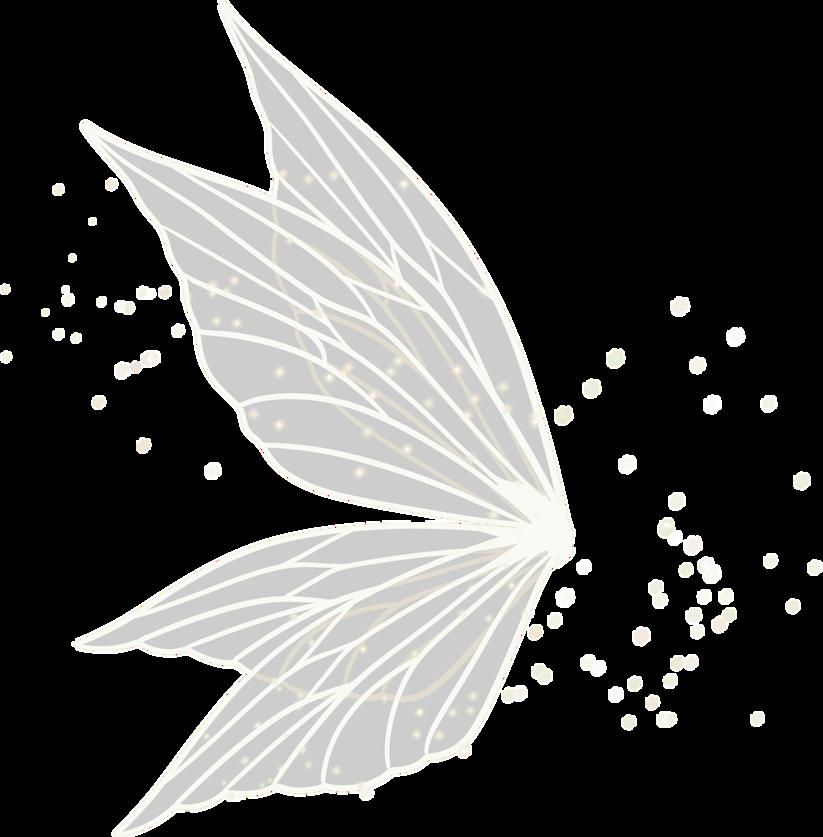
Mostly E’s: Puck From A Midsummer Night’s Dream
A trickster! Fooled me for a ghost You’re chaotic good with glitter in your ectoplasm. You haunt for the bit You thrive on mischief, and laughter Please keep the energy.
Theatreneverdies.Shakespeare’s characters,however,constantlydo.
By Alessandra Balassa ‘27 | Performance Studies
Watching Performance Dork at Texas A&M reminded me why I love Performance Studies. The piece, created by Daniel Oliver, was a devised performance built through collaboration and experimentation instead of a fixed script It was the kind of work that only makes sense when you are there in person, fully present in the room
From the beginning, the performance felt alive and unpredictable The performers used repetition of words, gestures, and sounds to create their own rhythm It wasn’t meant to tell a story but to make you notice how the actions changed slightly each time. At first the repetition felt confusing, but after a while I started to understand its purpose. It made me pay attention in a different way and allowed me to experience time inside the performance rather than outside of it.
Because I study Performance Studies, I could recognize what the piece might be exploring. But I also know that every performance is different, and we might not quite understand the actual intention behind the piece.
With that understanding, being part of it was something entirely incredible The show was strange, funny, and sometimes uncomfortable, but it was never boring. It asked us to participate and to be open to whatever might happen.
At one point, I was drenched in green paint. I didn’t expect it, and for a moment I didn’t know how to react. Later, I found out that ponchos had been available for the audience, which made me laugh. It also made me realize that being covered in paint was part of the point. It wasn’t about staying clean or protected. It was about letting go of control and allowing myself to fully experience the performance without regret.
What stayed with me most was how Performance Dork existed only in that space and time It couldn’t be captured or repeated exactly the same way The repetition, the sound, the mess, and the audience all built something that lived only in that moment
I’m glad that Texas A&M brings artists like Daniel Oliver to campus Seeing this kind of devised work helps me connect what I study in class to real, live performance It reminded me that theater and performance are not only about stories or characters, but about presence, process, and the experience of being there.
I hope to experience more shows like this on campus. Performance and Devised Theatre truly helps all of us realize that performance does not have to be linear, meaningful, or scripted. It just is. That’s why it’s art.

Performance Dork is a participatory adventure show about being a performance art dork and wanting to do dorky performance art things. It is influenced by ‘80s and ‘90s fantasy shows such as Dungeons & Dragons, Jamie’s Magic Torch, Knightmare, and Round the Twist. It mashes together experiences of escape rooms, role play games, immersive theatre, and performance art festivals. In it, Daniel, the Performance Dork, has discovered a bottle of magic liquid that he can pour on himself to take him anywhere he wants to be, and he always wants to be in the midst of doing a weird and experimental performance art show. The audience join him and his assistant Andy Spinkle (performed by Claudia Palazzo) as he uses the liquid to escape from angsty neuroboring scenarios such as ‘dad’s drinks’ or ‘being in a reading group’, and emerge into messy, fantastical and rude performance art experiences.



Daniel Oliver is a UK-based performance artist and lecturer. He makes gloriously dysfunctional performance art experiences that immerse audiences in the messy, outrageous, and DIY fantasies that he feels at home in His performances have been platformed internationally for over 20 years. He describes them as neurodivergent-led because they embrace an unmasking and foregrounding of his dyspraxic and executively dysfunctional modes of being and doing He is a lecturer and researcher on the Performance and Contemporary Art degree at the Royal Central School of Speech and Drama. His publications on his practice include Awkwoods: Daniel Oliver’s Dyspraxic Adventure in Participatory Performance (Live Art Development Agency, 2019) and “Live Art and Neurotransgression” (2024) in Contemporary Theatre Review, 34(3), 280–289.
By Kamryn Marroquin ‘26 | Communications
I have been writing random creative stories since I was very young, but I have always struggled to fully commit to one project I decided to take Screenwriting (FILM 358) because my biggest dream would be to see a story of mine on the big screen. I thought it would be the perfect opportunity to focus on one of my many ideas and go all out with it
Mr. Bobinky’s World follows Ivan, a former children’s show host, as he tries to navigate life after his time of fame has seemingly come to an end. On the surface, the story is about fame, nostalgia, and growing up. If you dig a little deeper, though, the story is about grief, identity, depression, and getting up again after being pushed down so many times.
As someone who struggles with their own mental health, I wanted to write a main character that people can relate to.
I explore the idea of Ivan’s debilitating mental health by adding two puppets that represent his inner thoughts. It is meant to show how much self-doubt can overcome a person’s entire life.
During this story, Ivan is going to be forced to confront people from his past and memories that shaped him into the person he is today. My goal is to mix deep topics that get the audience reflecting and comedy that gets them laughing.
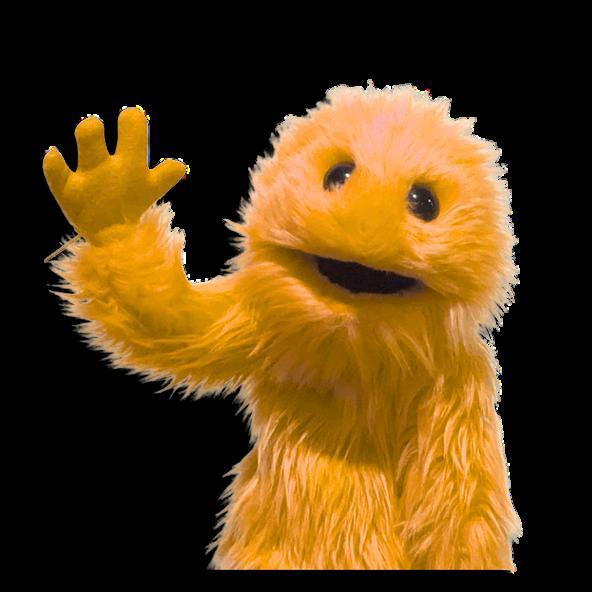
This Screenwriting class has really helped me develop my story. Before this semester, I only had a very basic idea of Mr. Bobinky’s World. The more time I spend writing my script, the more I am getting attached to my story. I want to keep developing it and eventually write an entire season of this show. Simply being in this class has inspired me and has made me excited to keep moving forward with this story.
If there is one message I want people to get from this story, it’s that healing isn’t a straight path. It’s not something that happens in a few days. In Ivan’s case, he has been trying to heal for years. The road to healing is messy, awkward, and difficult, but traveling down it is one of the bravest things a person can do.

IVAN sits on a couch in dirty sweatpants, shoveling popcorn into his mouth as he stares at his tv screen with red eyes and a grin. A red puppet with spikey black hair and orange features, MURRAY, sits to the left of him and a yellow puppet with fluffy black hair and orange features, OLLIE, sits to the right.
MURRAY
Do you think any of those kids realized that you were high off your ass? Ivan glances at Murray and eats a piece of popcorn off his lap.
IVAN
Of course not.
MURRAY
I don't know. You were kind of slurring. Ivan's smile drops and he grits his teeth.
IVAN
Do you have nothing better to do than bother me?
MURRAY
You're one to talk. You're 29 years old, alone, watching a children's television show on a Friday night
OLLIE
He's not alone We're here Ivan blinks rapidly
MURRAY
Oh, very impressive His only friends are puppets
IVAN
I have plenty of friends.
MURRAY
Name one.
MURRAY
Can't think of anyone else? That's what I thought.
Ivan stands up quickly and grabs the remote to turn off the TV. He throws the remote across the room and puts a finger in Murray's face.
IVAN
You ruined my night. I hope you're happy. Ivan storms out of the living room.
MURRAY
It does put a smile on my face.
Kamryn Marroquin is one of fifteen students developing a script in FILM 358: Screenwriting. You can read the rest of their developing script on our website!


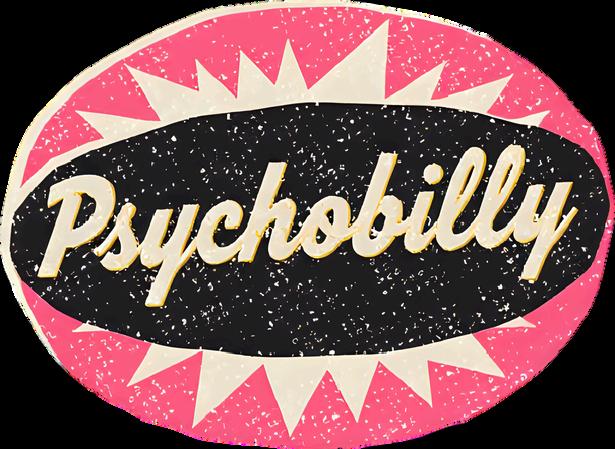
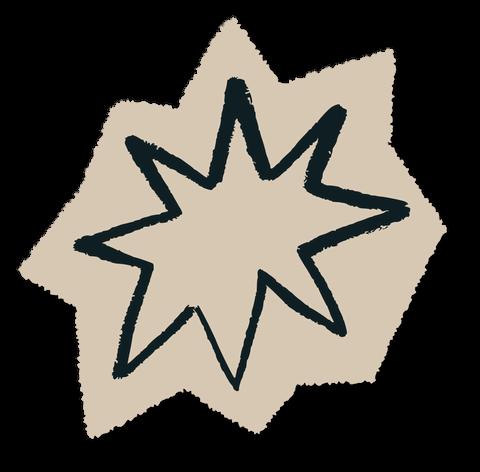

By Dr. Kattari | Associate Professor, Ethnomusicology
"Take an average rockabilly song about falling in love and add a verse about how that same girlfriend happens to be undead." That's how Washington Post journalist Carrie Donovan described psychobilly, a genre full of references to zombies and other classic monsters from horror movies.
About twenty years ago, I found myself at a club called Red 7 watching a psychobilly trio called Nekromantix The lead singer, Kim Nekroman, slapped away at a frenetic pace on his upright bass that he had customized from a child's coffin. He poured Jägermeister on the neck of the bass and licked it off while using his tongue to fret it, eliciting whoops and hollers from the crowd who approved of the excessive performance. He opened his eyes wide and rolled his pupils upward as if possessed. With a toe-tapping beat and some sick rockabilly guitar solos, the band tore their way through songs that would put anyone in the Halloween mood, like "Trick or Treat":
Last year I was the wolf man
Howling at the moon
Tonight is my night, oh yes indeed
I don't want no candy
Blood is my treat
As an ethnomusicologist with an interest in popular music, I'm fascinated by the way people express their identity through subcultural participation. In the case of psychobilly, fans literally wear their "psychobilly-ness" on their sleeve: they have tattoos, fashion styles, and haircuts that identify them very clearly as fans of this rockabilly-meets-punk subculture. And all year long, they embrace the campy horror associated with Halloween.
I think I was initially attracted to this scene because I have always loved Halloween. I was immediately drawn to the psychobilly aesthetic, full of dark colors, bats, spiders, and skeletons.
It was intriguing to me that so many psychobilly songs fantasized about being monsters or serial killers In my book, Psychobilly: Subcultural Survival, I suggest that psychobillies feel empowered by imagining themselves as "undead, unfriendly, and unstoppable" (the title of an album by psychobilly pioneers The Meteors).
Psychobillies are often perceived as "freaks" because of the way they look and act. They identify with monsters, who typically represent everything society is scared of or horrified by.



Songs about zombies and other "grotesque" characters allow psychobillies to reflect their own nonconformist and rebellious identities, as well as their feelings of alienation, monstrosity, and marginalization. Through tongue-in-cheek humor, they laugh about "killing the cheerleader" and outlasting normative society as the brain-sucking undead.
By revitalizing rockabilly and infusing it with monsters from 1950s B-movies, psychobillies celebrate the past while signifying their desire for subcultural identities to survive And what survives everything? Zombies! (well, and cockroaches).
So by drawing on scholarship about horror films, carnival, heavy metal, and shock rock, I argue that psychobilly fans express their difference from "the squares" through evasive fantasies that glorify taboo themes and tropes
At the end of the day, psychobillies always reminded me that their fascination with horror is just play and pretend. Many of the people I talked to during my research told me "it's just a bit of fun!" They don't really want to go on a killing spree, of course
But it can serve escapist needs to indulge in campy fantasies about monsters, murderers, and mad people who reject social discipline and behave in culturally unacceptable ways It allows them to imagine an alternative way of surviving in the world while turning normativity on its head.
As the PVFA's resident psychobilly expert, I've curated a Halloween playlist that draws from psychobilly, the classic novelty songs that influenced the genre, and more. You can check it out on Spotify or on YouTube.
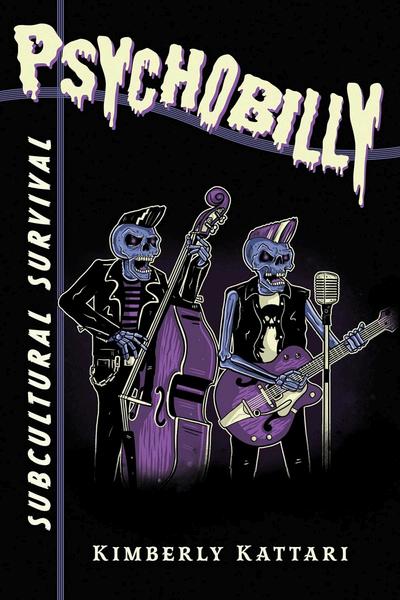



By Bruno Schoech ‘27 | Architecture
Junior Visualization major Karen Lopez never imagined that a simple fruit could become the centerpiece of a hauntingly personal game. Commissioned by VIVERSE in December 2024, Karen was given one prompt: “Make a video game.”
To bring her vision to life, she enlisted Junior Computer Science major Kyle Lev, and together they crafted Orange, a deceptively simple game that slowly spirals into a tense, anxiety-inducing experience about performance, perfection, and family pressure.
Together, they decided on a fixed camera game that would seem easy at first, but reveal itself to be more complex as the player goes through the levels
At first, the player’s task is to cut every orange on screen, without much room for error. After missing three oranges, the game restarts, and the player is forced to repeat the task from the beginning
As the game progresses, oranges begin moving faster, twisting into bizarre patterns. By the tenth level, the entire background turns a blinding orange, fully immersing the player in the color.
After beating the game, the player cuts to a scene where they can observe the table they were sitting at from afar. This time, a different character is at the table. A younger sibling takes the player’s place at the same table, facing the same relentless parental scrutiny. The sibling is now going through the same process with the parental figure that the player just went through.
“It’s a bit of my own experience,” Lopez said. “Especially having immigrant parents, they have high expectations. Being the oldest sibling adds another layer, seeing my own siblings following the same path.”
The color choice wasn’t accidental. Orange was a color specifically chosen due to its association with anxiety, according to color theory.
“I looked up color theory, psychology, and if there’s too much orange, it gives you a lot of anxiety,” Lopez said. “ I was like, orange gives you anxiety? What if you’re cutting oranges? BOOM. We got something there!”
“It’s such a simple thing that… the more you do something over and over again, it gets tedious, it gets boring, and it gets so draining. The feedback you get from the parent can affect you as well, because even if you finished the whole thing completely perfectly, … you can still do better.”
During development, Kyle Lev took on the coding for Orange, facing challenges such as programming the oranges’ movement across the different hours.
He had significant creative freedom, designing patterns that became increasingly complex for the oranges.
There were several different patterns possible for the oranges. “Weird patterns, squiggly patterns” said Lev. “There’s one that jumps across the screen.”
The other major challenge he encountered in the coding process was uploading their completed game onto VIVERSE’s platform. Since VIVERSE primarily supports VR games, the platform automatically added VR extensions to their code, which required troubleshooting before the game could function properly.
Kyle specifically recognized Elliot from VIVERSE for helping them disable the code. It was a team effort that kept the game going
Karen and Kyle completed Orange in March, describing the project as an amazing educational experience they would gladly do again.
If you want to play Orange today, it is free to play on VIVERSE’s website!




reviews of film, performance, video games, art installations, etc
research and writing done for a class
art, creative writing, scripts, etc
interviews with faculty or alumni
previews or writing about performances or projects you are working on
The Green Room thanks the Performance and Visual Studies Program for its support.

